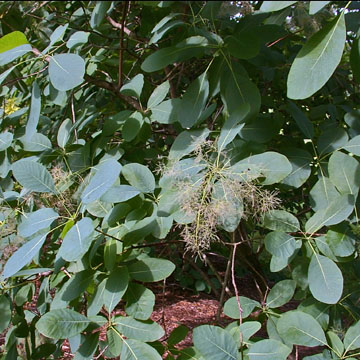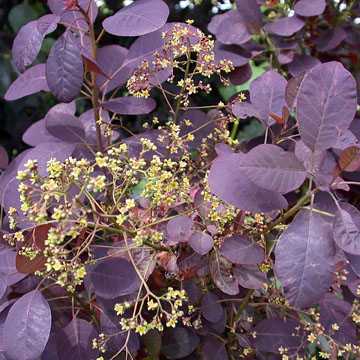

Cotinus obovatus - (image 1 of 3)
Taxonomy
Family: Anacardiaceae
Habitat
Rocky, calcareous soils.
Associates
Distribution
Local in a few south central states, northern AL, TN, northern AR, central TX (Edwards Plateau), with scattered trees ranging north into KY and southern MO and west into eastern OK.
Morphology
Deciduous tree, 8-12 m; bark scaly; stems orangish; leaf scars usually lobed; leaves emerging reddish, becoming bluish-green or dark green, alternate, simple, entire, obovate to elliptic-obovate, 5-12 cm long and half as wide, rounded to emarginate at the apex, cuneate at the base, silky pubescent below when young; petiole 1-3.5 cm long; flowers small, 5-petaled, born in a large panicle 15-20 cm, with numerous hairy branches that mature from whitish to pinkish.
Notes
Flowers June.
Wetland indicator: NA
Used as a source of yellow-orange dye during the Civil War which nearly caused the extinction of the species. The showy aspect of the inflorescence comes not from the flowers, which are small and inconspicuous, but from the hairy branches of the panicle that give the appearance of puffs of smoke. Hardy to zone 4.
Cotinus coggygria Scop., native to southern Europe and Asia, is smaller and more frequently planted, occasionally escaping from cultivation. The picture below is of a popular purple-leaved cultivar.

References
Dirr, Michael A. 1998. Manual of Woody Landscape Plants: Their Identification,
Ornamental Characteristics, Culture, Propagation and Uses.
5th ed. Champaign, Illiois: Stipes Publishing L.L.C.
|
© Michael Hough 2018 |